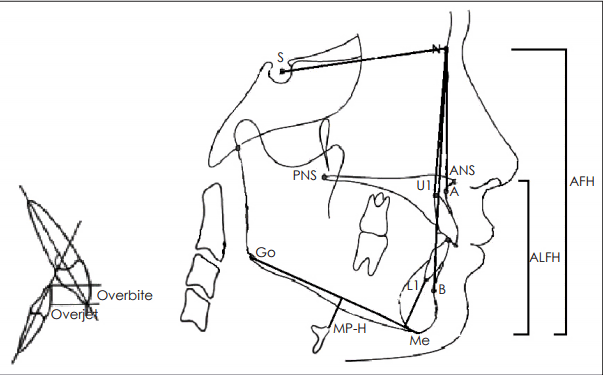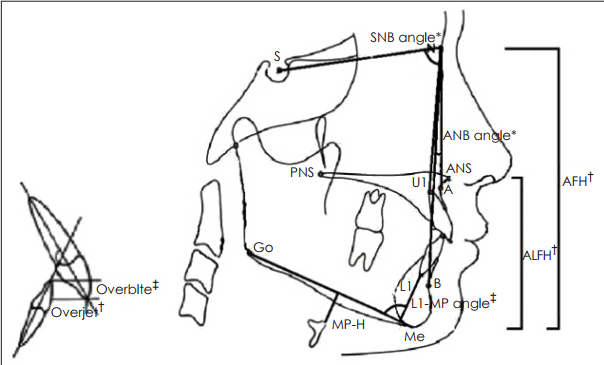1. Epstein LJ, Kristo D, Strollo PJ Jr, Friedman N, Malhotra A, Patil SP, et al. Clinical guideline for the evaluation, management and longterm care of obstructive sleep apnea in adults. J Clin Sleep Med. 2009; 5(3):263–76.
2. Kim DK, Lee JW, Lee JH, Lee JS, Na YS, Kim MJ, et al. Drug induced sleep endoscopy for poor-responder to uvulopalatopharyngoplasty in patient with obstructive sleep apnea patients. Korean J Otorhinolaryngol-Head Neck Surg. 2014; 57(2):96–102.
3. Kim HY, Jang MS. Improving compliance for continuous positive airway pressure compliance and possible influencing factors. Korean J Otorhinolaryngol-Head Neck Surg. 2014; 57(1):7–14.

4. Kushida CA, Morgenthaler TI, Littner MR, Alessi CA, Bailey D, Coleman J Jr, et al. Practice parameters for the treatment of snoring and obstructive sleep apnea with oral appliances: an update for 2005. Sleep. 2006; 29(2):240–3.

5. Ramar K, Dort LC, Katz SG, Lettieri CJ, Harrod CG, Thomas SM, et al. Clinical practice guideline for the treatment of obstructive sleep apnea and snoring with oral appliance therapy: an update for 2015. J Clin Sleep Med. 2015; 11(7):773–827.

6. Kim YH, Park DS, Son DH, Cho JH. Polysomnographic parameters related to the successful treatment of oral appliance in patients with sleep-disordered breathing. Korean J Otorhinolaryngol-Head Neck Surg. 2012; 55(12):771–6.

7. Spencer J, Patel M, Mehta N, Simmons HC 3rd, Bennett T, Bailey JK, et al. Special consideration regarding the assessment and management of patients being treated with mandibular advancement oral appliance therapy for snoring and obstructive sleep apnea. Cranio. 2013; 31(1):10–3.

8. Rose EC, Staats R, Virchow C Jr, Jonas IE. Occlusal and skeletal effects of an oral appliance in the treatment of obstructive sleep apnea. Chest. 2002; 122(3):871–7.

9. Robertson C, Herbison P, Harkness M. Dental and occlusal changes during mandibular advancement splint therapy in sleep disordered patients. Eur J Orthod. 2003; 25(4):371–6.

10. Wang X, Gong X, Yu Z, Gao X, Zhao Y. Follow-up study of dental and skeletal changes in patients with obstructive sleep apnea and hypopnea syndrome with long-term treatment with the Silensor appliance. Am J Orthod Dentofacial Orthop. 2015; 147(5):559–65.

11. Peck S. The contributions of Edward H. Angle to dental public health. Community Dent Health. 2009; 26(3):130–1.
12. Clark GT, Blumenfeld I, Yoffe N, Peled E, Lavie P. A crossover study comparing the efficacy of continuous positive airway pressure with anterior mandibular positioning devices on patients with obstructive sleep apnea. Chest. 1996; 109(6):1477–83.

13. Tan YK, L’Estrange PR, Luo YM, Smith C, Grant HR, Simonds AK, et al. Mandibular advancement splints and continuous positive airway pressure in patients with obstructive sleep apnoea: a randomized cross-over trial. Eur J Orthod. 2002; 24(3):239–49.

14. Bloch KE, Iseli A, Zhang JN, Xie X, Kaplan V, Stoeckli PW, et al. A randomized, controlled crossover trial of two oral appliances for sleep apnea treatment. Am J Respir Crit Care Med. 2000; 162(1):246–51.

15. Rose E, Staats R, Virchow C, Jonas IE. A comparative study of two mandibular advancement appliances for the treatment of obstructive sleep apnoea. Eur J Orthod. 2002; 24(2):191–8.

16. Lee WH, Wee JH, Lee CH, Kim MS, Rhee CS, Yun PY, et al. Comparison between mono-bloc and bi-bloc mandibular advancement devices for obstructive sleep apnea. Eur Arch Otorhinolaryngol. 2013; 270(11):2909–13.

17. Lowe AA, Sjöholm TT, Ryan CF, Fleetham JA, Ferguson KA, Remmers JE. Treatment, airway and compliance effects of a titratable oral appliance. Sleep. 2000; 23 Suppl 4:S172–8.
18. Mehta A, Qian J, Petocz P, Darendeliler MA, Cistulli PA. A randomized, controlled study of a mandibular advancement splint for obstructive sleep apnea. Am J Respir Crit Care Med. 2001; 163(6):1457–61.

19. Henke KG, Frantz DE, Kuna ST. An oral elastic mandibular advancement device for obstructive sleep apnea. Am J Respir Crit Care Med. 2000; 161(2 Pt 1):420–5.

20. Hoffstein V. Review of oral appliances for treatment of sleep-disordered breathing. Sleep Breath. 2007; 11(1):1–22.

21. Doff MH, Finnema KJ, Hoekema A, Wijkstra PJ, de Bont LG, Stegenga B. Long-term oral appliance therapy in obstructive sleep apnea syndrome: a controlled study on dental side effects. Clin Oral Investig. 2013; 17(2):475–82.

22. Ghazal A, Jonas IE, Rose EC. Dental side effects of mandibular advancement appliances - a 2-year follow-up. J Orofac Orthop. 2008; 69(6):437–47.

23. Doff MH, Hoekema A, Pruim GJ, Huddleston Slater JJ, Stegenga B. Long-term oral-appliance therapy in obstructive sleep apnea: a cephalometric study of craniofacial changes. J Dent. 2010; 38(12):1010–8.







 PDF
PDF Citation
Citation Print
Print


 XML Download
XML Download